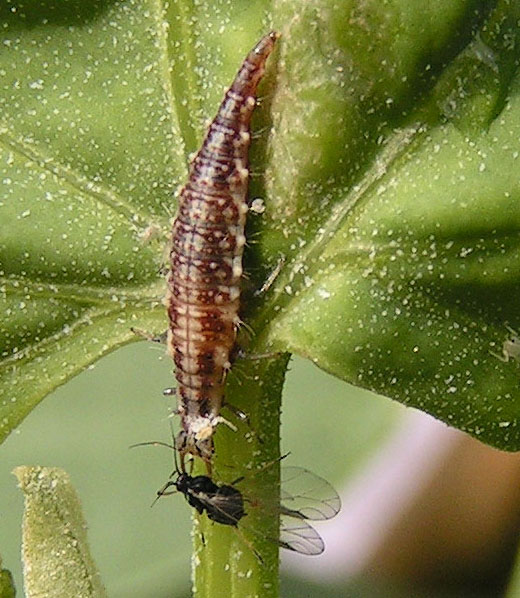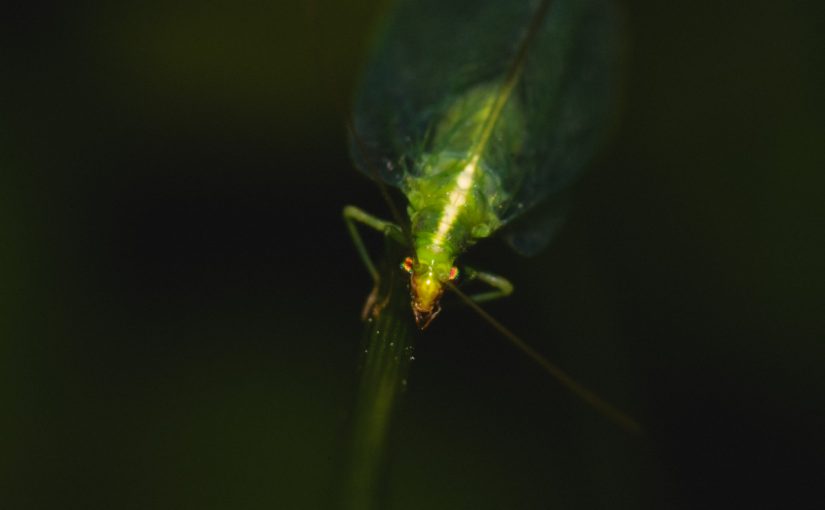Green lacewings are a sought after beneficial insect. They are capable predators in their larval stages, with distinct appearance throughout their life cycle. This post will cover some statistics and information about them, Chryspoperla carnea specifically.

Life Cycle: Lacewings undergo complete metamorphosis. They start as eggs, usually pale green to yellow in appearance, and are attached to long stalks. Their larval state has three instars, and this is when it is effective as a predator. Adults typically feed on pollen and nectar. Larvae are flat, grayish brown, andare often compared to alligators. They will feed on most anything, and do so voraciously, which is why they are so useful. A larva can consume as many as 250 leafhopper nymphs, 400 aphids, 11,200 spider mites, or 3,780 scale insects. When the larva is ready, it weaves a silk cocoon, white in appearance, and pupates for up to two weeks. They then emerge as adults, who are light green and .5-.75 inches long, with elaborately veined wings.
Continue reading Chrysoperla carnea
